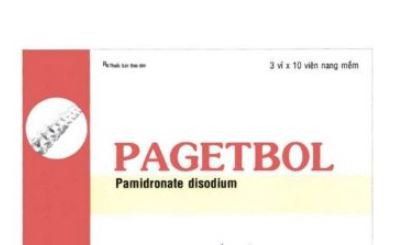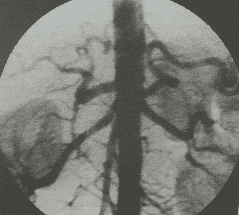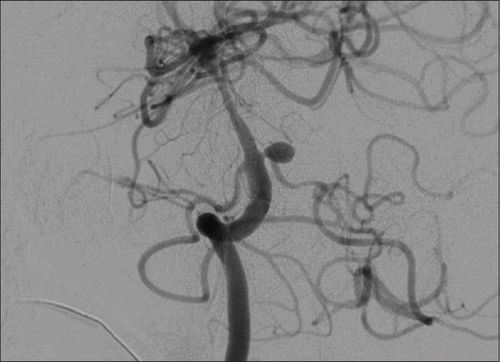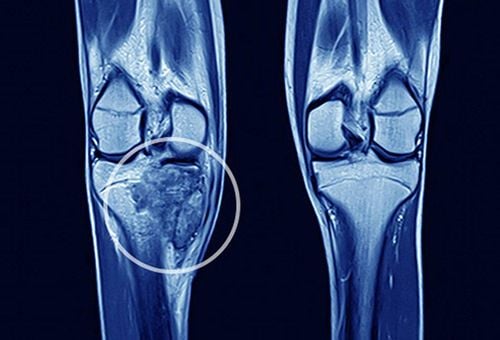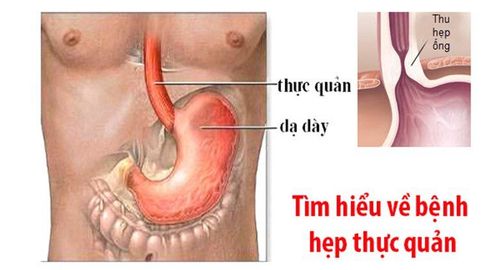This is an automatically translated article.
This article was written by Specialist Doctor II Khong Tien Dat, Doctor of Radiology - Department of Diagnostic Imaging - Vinmec Ha Long International Hospital.Visceral tumor embolization is a method of threading a tube through the femoral artery into the artery that perfuses the tumor in those organs, then injecting a substance that causes a permanent embolism. These materials can be PVA resins or chemicals.
1. Overview
Visceral angiogenic tumors are often supplied with blood from adjacent arteries. Through the intravascular route, under the guidance of digital background erasure, the doctor can block these arterial branches. In particular, the injection of embolic materials, or in addition to chemicals in the case of malignant lesions. In addition, the technique of embolization of visceral tumors under digitized scanning is also indicated for preoperative embolization to reduce the risk of bleeding during surgery.2. When is it necessary to perform the circuit under the digitizer to remove the background?
2.1. Point
Tumors in the abdominal cavity (eg liver, kidney, spleen...) are indicated for endovascular intervention with the technique of embolizing the tumor of the visceral organs under digitized scanning of the background in the following cases:Preoperative embolization: Usually performed a few days before surgery; Some cases of melanoma, but no longer indicated surgery: Embolization aims to control symptoms; Treat some benign tumors that are bleeding; Prophylactic treatment of some benign tumors with a risk of bleeding: For example, renal angiomyolipoma larger than 4cm.

U thận cần được chỉ định thực hiện
2.2. Contraindications
Usually there are only relative contraindications, each type of lesion will have different indications. In these cases, the benefits of endovascular intervention must be weighed against the risk of possible complications; Patients with renal failure; The vessels intended to be occluded have an anastomosis, with the risk of clogging unwanted vessels, especially the vessels that feed the spinal cord or the gastrointestinal tract; There is a large arterio-venous flow, high risk of pulmonary embolism.3. Preparation steps
3.1. Implementation team
Specialist doctors and interventional radiology technicians; Team of auxiliary doctors and nurses; Anesthesiologist and technician.3.2.Means
Digital background eraser (also known as DSA capture); Dedicated electric pump; Film, film printers, as well as image storage systems; Lead vest and apron, X-ray shielding.3.3. Drugs
Local anesthetics; General anesthetic (if indicated); Anticoagulants and neutralizers; Water-soluble iodine contrast agent; Antiseptic solution for mucous membranes and skin.3.4. General medical supplies
Syringes of sizes 1 - 3 - 5 - 10ml; Pump dedicated electric pump; Physiological saline or distilled water; Surgical gowns, caps, masks and gloves; Sterile interventional instruments: Knives, scissors, forceps, bowls, trays... Gauze and surgical cotton; Medicines and tools for emergency treatment of contrast events.3.5. Special medical supplies
Needle puncture; Set of vascular catheters size 5-6F; Standard conductor size 0.035 inch; 4-5F angiographic catheter; Microcatheter size 2-3F; Micro-conductor size 0.014-0.018 inch; Guide catheter size 6F; Y-connector set.3.6. Vascular clogging material
Bio-foam (Gelfoam); Synthetic resin (PVA); Bio-adhesives (Histoacryl, Onyx...); Metal spirals of various sizes (Coils).3.7. Patient
The procedure is thoroughly explained by the doctor for good coordination; Need to fast and drink before 6 hours. Can drink up to 50ml of water; If you're too excited, don't lie still, you need to give sedation...3.8. Test form
Medical facility's inpatient medical records; The technical performance designation sheet has been approved; X-ray film, or CT Scan or MRI (if available).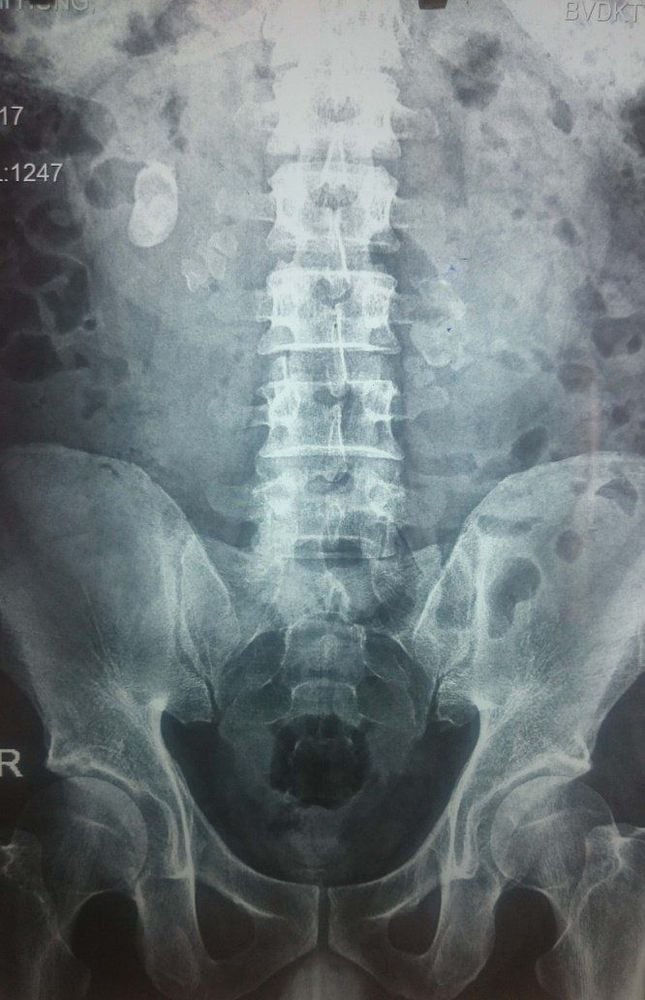
Người bệnh có thể cần chụp X-quang thận trước khi làm thủ thuật
4. Procedure
4.1. Placement of arterial puncture
Usually punctures the right femoral artery; A puncture from the brachial artery can be performed in special cases.4.2. Angiography and selective threading of the injured artery
Abdominal aorta should be performed with a lateral orifice straight catheter or a pigtail catheter; Then replace with a catheter to select the artery supplying blood to the lesion; Identify the artery supplying blood to the tumor, use a microcatheter for ultra-selective threading; Inject embolic materials appropriate to the lesion.4.3. Note
The patient lies in bed, immobilizes the leg on the side of the puncture for at least 6 hours and monitors for bleeding at the puncture site; Before the procedure, the bladder should be catheterized and the patient defecated first.5. Result
Technical procedures for embolization of visceral tumours under digital angiography are considered successful if the following two conditions are met:The tumor and its blood-supplying arteries have been completely blocked, no more reperfusion; Does not block blood vessels supplying healthy tissue and adjacent organs. Some possible complications are usually:
Renal failure: Mainly occurs in cases of renal vascular intervention. Therefore, when intervening, care should be taken not to block the blood vessels supplying the normal renal parenchyma. After the end of the procedure, many fluids should be given; Signs of intestinal ischemia: It is necessary to monitor the condition of the abdomen because in some cases there is a risk of occlusion of the gastrointestinal blood vessels; General complications during the intervention process (eg arterial dissection, perforation, bleeding...): Need specialist consultation before giving appropriate treatment; Visceral or mesenteric infarction: Due to a benign branch vessel node. In this case, it is necessary to consult a specialist and treat depending on the extent of the damage. In general, the technique of treating tumors of the visceral tumours under the background digitization scan has the advantages of being relatively safe, the duration of the procedure and hospital stay is short, and it does not affect the patient's labor much later. , leaving no scars or postoperative complications. However, this is also considered a difficult technique with a high cost, it should be carried out in large and reputable hospitals by qualified and skilled doctors.
Vinmec Times City International General Hospital is not only famous for its professional quality in medical examination and treatment, but also stands out for its modern medical machinery system that is incorporated into the comprehensive health examination process. Currently, at Vinmec, digital imaging technology has been applied in the examination and diagnosis of many diseases. Accordingly, the DSA scanning technique here is performed methodically and in accordance with the process standards by a team of highly skilled doctors and modern machinery. Thereby giving accurate results, contributing significantly to the identification of the disease and the stage of the disease and timely treatment.
If you have a need for medical examination by modern and highly effective methods at Vinmec, please register here.





